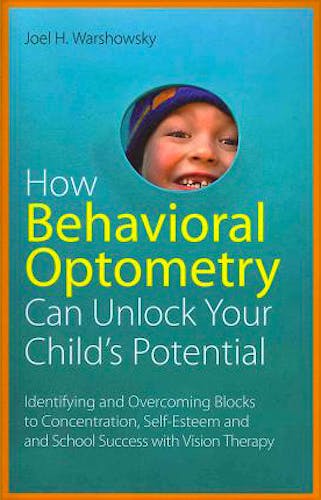

No hay productos en el carrito



How Behavioral Optometry Can Unlock Your Child's Potential
Warshowsky, J.
1ª Edición Marzo 2012
Inglés
Tapa blanda
160 pags
233 gr
14 x 22 x 1 cm
ISBN 9781849058810
Editorial JESSICA KINGSLEY PUBLISHERS
LIBRO IMPRESO
-5%
25,80 €24,51 €IVA incluido
24,81 €23,57 €IVA no incluido
Recíbelo en un plazo de
2 - 3 semanas
Description
Visual dysfunctions can limit children's concentration, self esteem and school success as they struggle to understand fundamentals such as colors, letters and how to judge distance. With the right help, these obstacles can be overcome, allowing children to reach their full potential and see the world clearly.
This accessible book explores how visual problems develop and how they can be reversed through effective and efficient visual therapy. It breaks down myths surrounding visual dysfunction and explains in straightforward terms the various conditions that could be impacting a child's perception, even if they have perfect sight. The visual therapy used in behavioral optometry retrains the brain to perform visual skills more effectively. In these pages there is clear guidance on the array of therapies, techniques and aids available, all of which can make a profound difference to a child's life.
This introductory guide to behavioral optometry will be a welcome resource for parents and professionals in search of options to help a child who is experiencing visual problems.
"Underachieving children typically don't feel connected. The process of training children to reframe their visual connectedness with the world is not only about vision. It is about utilizing vision to reframe the relationship between children's inner reality and their external reality. Vision is merely the vehicle, the classroom, the training ground. The true benefits accrue when a child, perhaps your son or daughter, takes what he or she has achieved in the safe and nurturing environment of therapy and applies it to the outside world. It is then that a child's entire sense of who they are and what they are capable of, has been modified for the better."
- An Interview with Dr. Joel Warshowsky, 8 February 2012
Reviews
“In these pages Joel Warshowsky, OD, shows how important it is for the success of behavioral vision care treatments, as well as health care at large, to be caring and empathetic, to listen to one's patients and to find supportive ways to communicate back with them. Over many years he has sung this theme consistently and in harmony with his excellent clinical skills. This book is the pinnacle of his work and encapsulates his caring demeanor in a way that all health care practitioners can learn from and employ in their own practices.”
-Paul Harris, Doctor of Optometry, Associate Professor, Southern College of Optometry, Tennessee, USA
"This book should be required reading for every parent, patient and professional who cares for children! It is a fascinating written work full of practical, easy to understand information about vision and your child…This book will become your guide to your child's success."
-Bruchie Barbara Langsam, parent, New York City, USA
Contents
- Preface.
- Introduction: My Vision for this Book.
- Part I. Understanding Vision in Children: Background and Basics.
- 1. Understanding the Effects of the "Failure Syndrome" in a child.
- 2. Convergence: What is it and Why is it Important.
- 3. The Difference Between Good Eyesight and Functional Vision.
- Part II. Overcoming Blocks and Unlocking Potential: What is Vision Therapy and When is it Needed?.
- 4. Vision Therapy: History and How it Works.
- 5. How Vision Therapy Can Aid Learning.
- 6. Vision Therapy and Learning Disabilities.
- 7. The Role of the Behavioral Optometrist in the Child Study Team.
- 8. Vision Therapy and Occupational Therapy: A Co-joined Approach.
- Part III. Specific Vision problems and Behavioral Optometric Interventions.
- 9. Types of Lenses and How They Help.
- 10. Some Specific Vision Problems: Nearsightedness, Strabismus, and Amblyopia.
- Epilogue: When I was Twelve.
- Resources.
- A Sample Letter.
- Visual Function Self Test.
- Exercises That May Be Done At Home.
- If you have Questions.
- Suggested Reading.
- Glossary.
© 2025 Axón Librería S.L.
2.149.0